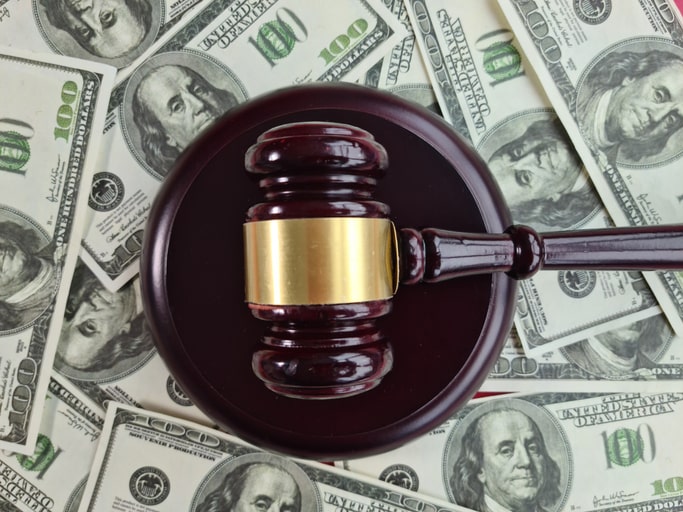What is the Difference Between Chapter 7 and Chapter 13 Bankruptcy in Tucson?
Dealing with overwhelming debt can be a challenging experience. However, individuals buried in debt can seek relief and regain control of their finances through the United States Bankruptcy Code. The two most common kinds of bankruptcy filings are Chapter 7 and Chapter 13, each catering to different financial situations.
Understanding the critical differences between these two chapters can help individuals determine the most suitable option for their specific circumstances. In this blog, we shall explore five differences between Chapter 7 and Chapter 13 bankruptcy, determining the appropriate one for you, and how a Tucson bankruptcy lawyer can help.

- Eligibility Criteria
Chapter 7 bankruptcy is meant for individuals or businesses that meet specific income requirements and pass the means test. This test compares the debtor’s income to the median income in their state. The debtor may be eligible to file for Chapter 7 if they make less than the median income. On the other hand, Chapter 13 bankruptcy is available for individuals with a regular income, unsecured debts of $394,725, and secured debts not exceeding $1,184,200. Additionally, a business cannot file for Chapter 13 bankruptcy in Tucson, Arizona.
- Asset Liquidation vs. Debt Reorganization
Chapter 7 involves the liquidation of non-exempt assets to repay creditors. Assets such as primary residences, cars, and necessary belongings are protected from liquidation under Chapter 7 exemptions. However, Chapter 13 bankruptcy focuses more on debt reorganization. Rather than liquidating assets, individuals propose a repayment plan to the court. This allows them to catch up on missed payments while retaining their assets.
- Repayment Plan
While Chapter 7 focuses on liquidating non-exempt assets, such as secondary properties, to repay creditors, Chapter 13 involves a repayment plan that can take three to five years. The repayment plan is made to reorganize debts and make affordable monthly payments to a bankruptcy trustee, who then distributes the funds to creditors.
- Duration
The duration of bankruptcy proceedings is also different in the two chapters. Chapter 7 bankruptcy typically concludes within months after filing. However, the bankruptcy remains on the individual’s credit report for ten years from the filing date. On the other hand, Chapter 13 bankruptcy involves a repayment plan that spans three to five years. Once the plan is completed, the bankruptcy remains on the individual’s credit report for seven years from the filing date.
- Debt Discharge
Both Chapter 7 and Chapter 13 offer the possibility of debt discharge, but the scope of dischargeable debt differs. In Chapter 7, most unsecured debts, such as credit card debt, medical bills, and personal loans, can be discharged within one year. This enables individuals to start afresh without having to repay those debts. However, certain debts, such as tax obligations, child support debts, and student loans, are non-dischargeable under Chapter 7.
Chapter 13 bankruptcy allows for debt restructuring or adjustment, including car loans and mortgage arrears. The remaining eligible debts can be discharged upon completing the repayment plan. As with Chapter 7, non-dischargeable debts like student loans typically remain in effect after bankruptcy unless you can demonstrate undue hardship.
Which Chapter of Bankruptcy is Right for You?
Determining the appropriate chapter depends on your unique circumstances. Chapter 7 is often suitable for individuals with minimal income and a few assets, who owe more money than they have or can earn, and with substantial unsecured debts. Filing Chapter 7 helps to discharge unsecured debts swiftly.
On the other hand, Chapter 13 is more suitable for those who do not qualify for Chapter 7 but still want debt relief, have a regular income, and want to retain their assets while repaying their debts over time. This chapter enables individuals to have a manageable repayment plan.
Given the specifics of your situation, consulting with a Tucson bankruptcy lawyer is crucial to understand the most suitable bankruptcy chapter to file.
How a Tucson Bankruptcy Lawyer Can Help
Bankruptcy proceedings can be complex, and having professional guidance is essential. An experienced Tucson bankruptcy lawyer can help in several ways, including:
- Assessing your financial situation
- Explaining the intricacies of Chapter 7 and Chapter 13
- Helping you understand which bankruptcy fits your situation best
- Developing a feasible repayment plan
- Protecting your assets
- Ensuring all necessary documents are filed
- Guiding you through the process
Contact the Skilled Bankruptcy Attorney in Tucson, Arizona Today
If you are facing overwhelming debts and need professional guidance on bankruptcy in Arizona, do not hesitate to contact a trusted Tucson bankruptcy attorney. Contact the skilled bankruptcy attorney, Eric Ollason, today at (520) 791-2707 or online to discuss your financial situation and explore the best option for your unique needs.





